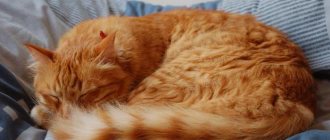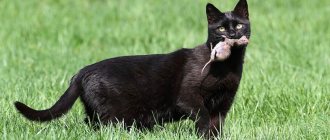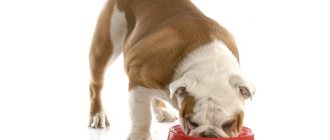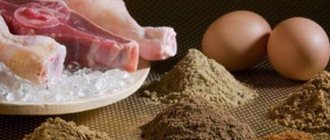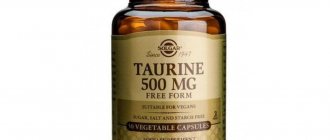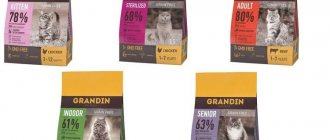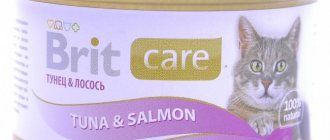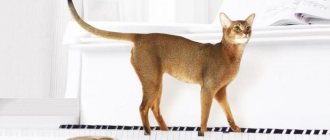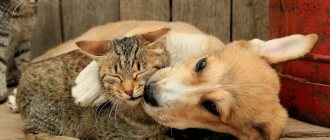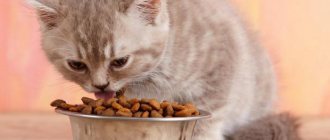When choosing food for a cat, every owner looks for the optimal product that meets all the needs of the animal and is affordable. Pro Plan cat food from Purina has long been known and popular on the Russian market. Let's figure out how useful Pro Plan is, study its composition, cost and product line, as well as all its advantages and disadvantages.
About the food
Purina Pro Plan cat food is produced by the American company Nestle Purina PetCare under the Purina brand in factories in Italy, France, and Russia. It belongs to the premium class products, but if you take into account the presence of a veterinary line, then the class of food can easily be classified as super-premium. Purina is also a manufacturer of Purina One, Purina Cat Chow, Gourmet, Felix, Friskies, Darling food, and produces food products not only for cats, but also for dogs. The range of the famous brand includes dry, liquid food and vitamin and mineral supplements in the form of separate products.
According to the manufacturer, Pro Plan can be the cat's only food and there is no need to add other ingredients to the menu. All types of food are presented with a rationally balanced nutritional composition, and also contain vitamins, enzymes and beneficial probiotics to strengthen the immune system, maintain healthy teeth and coat. The Pro Plan product line is officially recognized as hypoallergenic. Moreover, each series of food has a wide range of flavors that can satisfy the most picky cats.
Manufacturer
The manufacturer of Pro Plan food is Nestle Purina PetCare Company.
It has existed for more than 80 years, and currently its team consists of approximately 18,000 employees and several hundred scientists. And it all started with horse meat. Yes, yes, ordinary horse meat! Horses that died of old age (or for other reasons) were fed to dogs, and a little later - in 1860 - the American James Spratt began producing the first commercial food.
The first company was founded in 1894: it was renamed several times, expanded, and production was modernized. Eventually the Nestle Purina PetCare Company was formed.
The head office was made in St. Louis, America, and the divisions were “scattered” all over the world: Oceania, Australia, Africa, Asia, Europe...
Manufacturers assure that in their work they are guided exclusively by the interests of animals and work for their benefit. Experts in the field of nutrition, veterinary medicine, formulation developers and even animal psychologists are involved in the work.
Purina Pro Plan food line
- Dry food in the form of small homogeneous granules. Introduced the Original Adult series for adult cats with rice additive and flavors: chicken, duck, turkey, salmon. Sold by weight and in individual packages.
- Soft food: canned food in jars and pouches in 85 g bags with flavors: chicken, turkey, lamb, salmon, sea fish in the form of jelly, pate, sauces.
- Pro Plan food for kittens of the Pro Plan Junior series, including dry food in packages from 0.4 g to 10 kg, as well as wet food in the format of pouches and cans of pate and stew. For kittens there is also a Baby Kitten series for the first feeding.
- Pro Plan for older and elderly cats: a special line of 7+ of all series has been developed for them: Adult, Original, Nutrisavour.
- Dietary general strengthening series: Pro Plan Delicate for cats with weak or sensitive digestion, Pro Plan Derma Plus for strengthening the skin, coat and making it silky.
- Purina Sterilized - for castrated and sterilized cats to maintain optimal weight and a healthy genitourinary system after surgery, and to prevent urolithiasis.
- Purina Pro Plan medicinal: veterinary line Veterinary diets for a maintenance and therapeutic diet for a wide variety of cat diseases. Includes the series: OM - to combat obesity; UR - for animals with urinary tract diseases; NF - for kidney pathology; Hepatic—for cats with liver disease.
This therapeutic line also includes food for a veterinary diet for diseases of the joints, gastrointestinal tract, diabetes, chronic allergies, food intolerance, etc. The series includes a special feed additive of the Fortiflora series with a probiotic to normalize the gastrointestinal tract.
Feeding recommendations for PRO PLAN food
The furry purr's diet is prescribed by the attending veterinarian. His feeding recommendations must be strictly followed. This is especially important for sick cats eating medicated food.
There are several general recommendations for feeding Proplan. Cat spiders can be combined with dry food. For example, you can feed your cat wet food in the morning and evening and place a bowl of dry food for her to eat if she gets hungry. A cup of clean drinking water must be nearby.
Each bag indicates how much food a cat needs based on its weight. The larger the pet, the more it eats.
You should not overfeed your pet, as this can lead to obesity and cardiovascular disease.
Proplan cat food is a very expensive food, so to save money you can order it in bulk.
Important! Cats don't drink enough, which makes them susceptible to kidney disease. It is necessary to provide your cat with water.
HA ST/OX HYPOALLERGENIC
Composition of Pro Plan food
Let's look at the main composition of Pro Plan using the example of standard dry food for adult cats and cats, Original Adult. The manufacturer guarantees that the food contains:
- proteins: 36%;
- fat: 16%;
- fatty acids: Omega-6: 2.5%; Omega-3: 0.4%;
- raw ash: 7%;
- crude fiber: 1%.
Let's study in more detail.
- The composition includes: chicken 21% and dried poultry protein. Compared to other premium brands, Pro Plan puts chicken meat first. The percentage of poultry protein is not indicated, and the word “meat” is not used, so it cannot be said that this is pure chicken meat. According to the American AAFCO standard, the ingredient called chicken also includes chicken bones, skin and offal.
- Wheat and rice are in second place. Both ingredients are sources of carbohydrates, with rice being the most palatable for cats.
- Corn and wheat gluten and corn. These are quite allergenic products, especially corn, which is almost always GMO. Corn is cheap and profitable for the manufacturer, but the most harmful product for cats: it often causes allergies in animals with hair loss, bald spots and scratching. Wheat gluten, like corn gluten, contains a lot of vegetable protein.
- Animal fat is a source of Omega-6 and Omega-3 fatty acids, but the origin of the fat is not specified.
- Powdered eggs are an additional source of protein.
- Minerals: iron, copper, iodine, manganese, zinc and selenium.
- Vitamins: A: 37000 IU/kg, D3: 1200 IU/kg, E: 670 IU/kg, C: 160 mg/kg.
Also included in the composition, without specifying the percentage: dried chicory root, fiber, flavoring additive, yeast, preservatives, amino acids.
The manufacturer also claims that the food contains a natural probiotic, but what percentage it is and what exactly it is called is not provided.
Let's summarize: if you analyze the origin of the protein in the amount of 36-40% (this is the norm for a healthy cat), declared by the manufacturer, you can understand that animal proteins contain exactly more than 20%. But since the amount of dry poultry protein is completely unknown, the remaining 16-20% of proteins are most likely of plant origin.
Regarding the dosage of dry food:
| Cat weight, kg | Feed rate per day, g |
| 2 – 4 | 35 – 65 |
| 4 – 6 | 65 – 95 |
| 6 – 8 | 95 – 125 |
According to reviews, 1.5-2 kg of dry food for a month is enough for one adult medium-sized cat. For example, with a cat weighing 3.5 kg and a norm of 50-55 g, 1,500 to 1,650 g of food will be enough for her per month. There is no need to buy vitamins and mineral supplements separately. Each product in a separate line has its own feeding recommendations.
Advantages and disadvantages
As for the advantages and disadvantages, the potential consumer should familiarize themselves with these theses in advance. This information is based solely on reviews.
Let's start with the pros:
- The manufacturer offers the domestic market a fairly large range of produced feeds. The owner of any animal, meaning age and breed, will be able to choose a diet for their pet. In addition, both dry and wet variations are available for sensitive organisms, growing dogs, and diets.
- You can find Purina designed specifically for animals suffering from urolithiasis or some kind of allergy. But keep in mind that such a diet should only be prescribed by a veterinarian.
- The food contains natural meat or fish, albeit in small quantities.
- The production of goods is carried out under the supervision of professionals, as is their development.
- There is, like many other manufacturers, a program for nurseries that allows you to purchase feed in maximum packaging at an affordable price.
Now let's move on to the cons:
- The cost of production is quite high, especially considering the minimum amount of meat products in the composition.
- Although Purina offers consumers many different types, the composition, as practice shows, is largely identical.
- As you understand from the previous paragraphs, it is mostly based on cheap grain products. In particular, corn and wheat, which are included in feed, can cause food allergies.
- And although almost all types in the Purina line are positioned as hypoallergenic, flavor enhancers are added to them during production. Reviews from experts make it clear that this can cause allergies in some sensitive individuals.
Feed cost
Pro Plan is sold in any pet store and supermarket with a small selection both online and offline. The price varies depending on the weight purchased and the type of feed. In 2021, average prices for Pro Plan for the Adult series ranged from 480 to 700 rubles. for 1 kg of dry food:
| Feed package weight | Price per package, rub | Cost per 1 kg, rub |
| Dry 0.4 kg | 280 | 700 |
| Dry 1.5 kg | 990 | 660 |
| Dry 3 kg | 1890 | 630 |
| Dry 10 kg | 4810 | 481 |
| Wet in pouches 85 g | 49 – 65 | 576 – 765 |
Pro Plan Pros and Cons
The benefits include:
- accessibility and availability in many stores;
- high percentage of protein content;
- rich in vitamins and beneficial microelements;
- a huge range of flavors;
- availability of a treatment line for cat diseases;
- balanced composition, the presence of medicinal enzymes and probiotics.
Disadvantages include:
- overpriced compared to other higher quality analogues: Acana, Royal Canin, Go Natural, NOW, Felidae;
- the presence of allergens in the composition and the increased content of vegetable protein, an increased proportion of carbohydrates in the diet;
- vague statements of the constituent components without indicating the percentage;
- use of flavoring fillers and preservatives.
Feed overview
Pro Plan diets belong to the premium class. The first ingredient in the food is an animal (depending on the taste of the food). However, such a general designation means that both meat and various offal products (bones, skin, etc.) are used in production. The list continues with grain crops: wheat, rice, corn. Also among the ingredients is animal fat. It is not specified which animals this component is used in the feed from. The food is rich in microelements and vitamins, which are vital for cats with different needs. Antioxidants and preservatives are present in the composition, but the manufacturer does not disclose their nature.
Pro Plan produces dry and wet diets. Dry lines are extremely diverse in direction and include five main flavors - turkey, salmon, chicken, rabbit and lamb. There are two types available for kittens - those without special needs and those with digestive problems. Information about the food can be found on the manufacturer’s official website www.proplan.ru.
Rulers for adults:
- Sterilized cats (different tastes);
- Cats prone to skin and fur allergies;
- For animals that have digestive problems;
- Adult cats (contains components that support immunity);
- For cats that live only at home;
- Cats that are prone to gaining excess weight;
- A line aimed at maintaining the health of the oral cavity and teeth.
For animals over 7 years old there are lines without special needs and for older neutered cats.
Advantages and disadvantages of Pro Plan food for cats
Wide variety of dry and wet food lines
There are specialized therapeutic (veterinary) diets
Sold in almost every pet store
Diets are fully balanced in vitamins and minerals
All lines of food for adult animals are aimed at maintaining kidney health
High grain content, which means a fairly large percentage of vegetable protein content
The manufacturer does not indicate which flavorings and preservatives are used in production
It is unknown which parts of the carcass are used to make feed
Any wet food contains fish, which can cause allergic reactions in cats.
Canned diets, in addition to meat, contain quite a lot of processed products (animal and vegetable)
